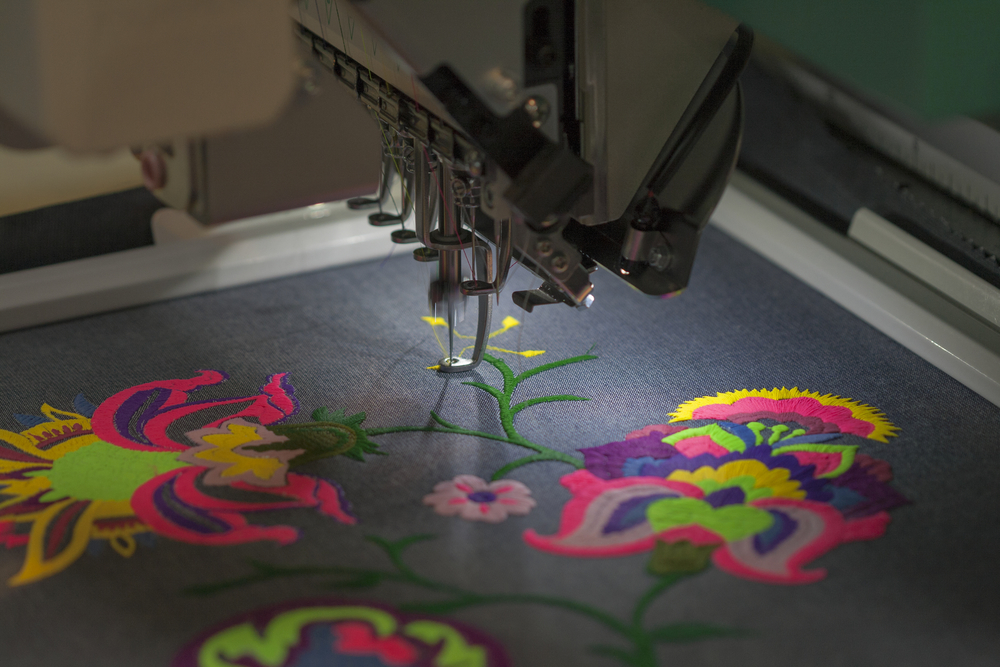Effective Digitizing for Embroidery: Quick Turn-around
Wiki Article
Mastering the Needlework Digitizing Process: Your Ultimate Guide
Embroidery digitizing is a careful craft that needs accuracy and experience to equate elaborate designs into electronic styles for equipment needlework. As artisans begin on this journey to master the embroidery digitizing process, a comprehensive understanding of the basics establishes the foundation for excellence.
Understanding Embroidery Digitizing Essentials
Embroidery digitizing essentials form the structure whereupon intricate styles are equated into machine-readable layouts for specific stitching. This initial action in the embroidery digitizing procedure is essential for making sure that the last embroidered item is a devoted representation of the initial design. Understanding needlework digitizing basics involves understanding essential ideas such as stitch kinds, stitch instructions, thickness, underlay, and pull compensation.Stitch types play an important role in determining the visual and textural end result of the embroidered style. By selecting the ideal stitch type, whether it be satin, fill, or running stitch, digitizers can accomplish the desired effect and boost the total quality of the embroidery. In addition, stitch instructions influences the flow and dimension of the design, while density identifies the spacing and coverage of the stitches.
Furthermore, padding stitching gives security to the layout by safeguarding the textile and avoiding distortion during the embroidery process. Pull settlement is an additional necessary consideration to neutralize the natural tendency of textile to agreement when sewn. Grasping these needlework digitizing essentials is fundamental for producing professional-quality stitched products.
Selecting the Right Digitizing Software Application
Selecting the appropriate digitizing software program is a critical decision that significantly affects the efficiency and high quality of the needlework digitizing procedure. Digitizing for Embroidery. When picking the right digitizing software application, it is necessary to consider aspects such as the intricacy of layouts you intend to create, the user-friendliness of the software application, the level of consumer support used, and the compatibility with your embroidery makerThere are various digitizing software application alternatives available out there, varying from standard programs for novices to browse around here advanced software for expert digitizers. Some prominent options consist of Wilcom EmbroideryStudio, Hatch Embroidery Software, and PulseID. These software bundles supply a variety of devices and functions to assist you create intricate designs with ease.
Prior to making a choice, it is recommended to check out the different software program options via free tests or trials to determine which one ideal matches your requirements. Furthermore, reading evaluations and seeking suggestions from skilled digitizers can provide important insights right into the staminas and weaknesses of each software application plan (Digitizing for Embroidery). By meticulously examining your demands and contrasting the attributes of various digitizing software application, you can make an informed selection that improves your needlework digitizing workflow
Digitizing Tools and Strategies

Optimizing Style Settings for Embroidery
Grasping the ins and outs of style settings is basic in attaining optimal outcomes in the embroidery digitizing procedure, her explanation building upon the foundation laid by understanding digitizing tools and techniques. When maximizing layout settings for embroidery, it is essential to take into consideration elements such as stitch type, thickness, rug, draw compensation, and registration. Enrollment setups align different components of the design accurately, preserving total official website design honesty.
Troubleshooting Common Digitizing Issues
When coming across common digitizing concerns during the embroidery process, it is important to understand the origin and carry out efficient options quickly. One common issue is stitch thickness issues, where stitches may be as well thick, causing the textile to pucker, or too thin, causing spaces in the design. Readjusting the stitch density settings in the digitizing software can aid resolve this concern.Another regular difficulty is string breaks throughout the needlework process. This can happen as a result of different factors such as incorrect tension settings, boring needles, or using low-grade string. Making certain appropriate maintenance of the needlework device, including normal needle modifications and tension changes, can reduce the event of string breaks.
Furthermore, design registration errors can result in misaligned components within the embroidery design. Inspecting the style positioning in the digitizing software and making required modifications before sewing can assist in preventing this issue. By dealing with these common digitizing concerns quickly and efficiently, you can guarantee a smoother needlework process and top quality completed products.
Final Thought
To conclude, mastering the embroidery digitizing procedure needs a strong understanding of the basics, the appropriate selection of software program, and knowledge of tools and strategies. Maximizing design setups and troubleshooting usual digitizing concerns are vital actions in guaranteeing premium embroidery outcomes. By complying with these steps vigilantly, one can accomplish precision and performance in the digitizing process.Report this wiki page